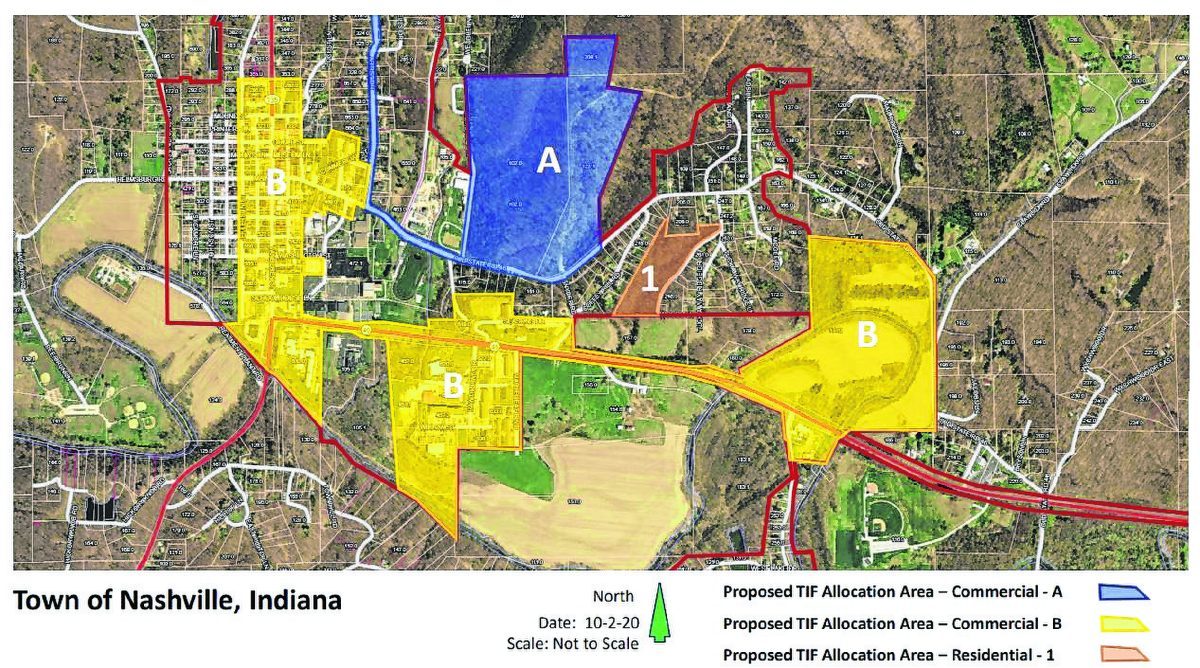The Nashville Redevelopment Commission approved a draft of proposed TIF allocation areas in a meeting on Oct. 6.
The areas includes two commercial zones and one residential.
Commercial A includes the Hard Truth Hills property on Old State Road 46, the Artist Drive and State Road 135 North roadways, up to the BWQOHT property (Quaff ON! brewery) on 135 North.
Commercial B generally includes property that is considered commercial in Nashville.
“The intent was to capture what property is considered commercial or underdeveloped commercial,” commission adviser Ed Curtin said.
Area B continues on State Road 46 East into Parkview, encompassing farmland, the Hesitation Point building and the Red Barn Jamboree.
Residential 1 includes undeveloped land between Coffey Hill Road and Tuck A Way Ridge Drive. That area is being turned into a new housing subdivision.
The commission was given these areas as a proposed outline and moved that the plan be accepted.

TIF stands for tax-increment financing. In a TIF area, a portion of new property tax revenue is captured for use by the redevelopment commission. That new tax revenue is the difference between what that land was taxed at when it became part of the TIF area and what it is being taxed at now.
Bonding against that TIF money, or the increased property taxes that would come from that land, a redevelopment commission can take out loans for projects that would benefit the TIF area, such as sewers, sidewalks and more.
TIF also stops the flow of those new property taxes to any taxing unit besides the redevelopment commission for up to 25 years. The original taxes on the undeveloped property, though, keep being distributed. After the TIF expires, all taxing units receive the increased amount.
The commission said that there may be a small impact on the Brown County school corporation, but it depends on the levy they have. If it interferes or makes a substantial impact on the schools, the commission said that they will reevaluate the area.
Ultimately, the areas are as concise as they can make them, Curtin said.
The next step for the commission is to put together an economic plan and declaratory resolution, which then goes to the Area Plan Commission for approval then to the Nashville Town Council.
Once those steps are complete, the proposal comes back to the redevelopment commission for a confirmatory resolution.
A presentation about the TIF area is on the agenda of the town council’s next meeting this Thursday, Oct. 15.
[embeddoc url=”http://www.bcdemocrat.com/wp-content/files/sites/3/2020/10/Nashville-Town-Council-Agenda-10-15-2020-final.pdf” download=”all”]

